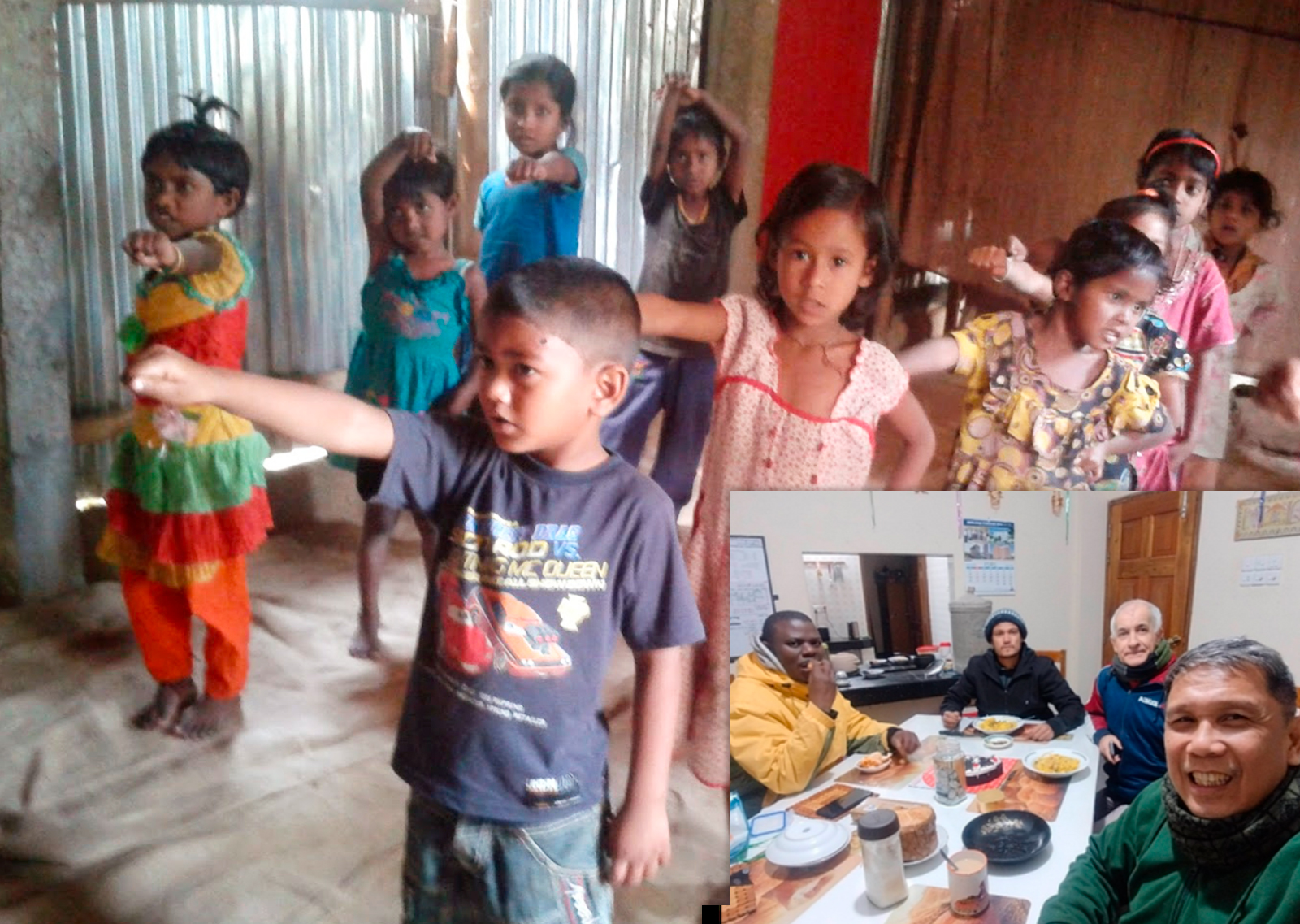
Marist Brothers ministry work at the Giasnogor community
The Giasnogor community in Bangladesh, Marist District of Asia, is composed of three brothers from three different continents: Asia, Africa, and Europe. They are Brothers Vigilio Bwalya (Zambia), Marti Enrich (Spain) and George Valle (Philippines) who are directly involved in administering the School Saint Marcelin, built for the children of the workers of the tea plantations, who live in poor conditions.
Br. Marti is the current principal of the school; Br. Vigilio is the coordinator, school /community bursar, and community leader. And Br. George is a part-time English teacher, a basketball trainer, and a full-time itinerant vocation promoter. The three brothers are working under the diocese of Sylhet with about twenty thousand registered Catholics. Reverend Shorot Gomez, the former rector of the major seminary in the capital of Dhaka, is the current administering diocesan bishop.
The Marist Brothers also work in collaboration with the Marist Missionary Sister, represented by Sr. Shakuntola Arjun, as the overall in-charge of the hostel for girls. Her lay assistant is Pinky Mankhin. Kotrim Yang works for the boys with Sumon Hembrom as his assistant.
This year, in January 2023, Topu Mondol, a newly professed young Bangladeshi brother, who was on his way to MAPAC after First Profession, worked in the community during the first week of the opening of classes.
Talking about the ministry in the Community, Br. George says: “This type of mission work is so tiresome, however, after the end of each day I am HAPPY, at PEACE, and feels so good to pray! Fear not, come and see.”
The Saint Marcelin Secondary School
School Saint Marcelin has 401 students enrolled from classes 6 to 10. There are sixteen teachers and three non-teaching staff. The school is primarily intended for the children of the tea garden workers who cannot afford to send their kids for further studies after class 5 or primary level due to financial constraints, distance, security among girls, and accessibility.
The Campus has four main buildings with the school as the first from the main gate northwest and adjacent to it is the boys’ hostel then followed by the Brothers’ house and the girls’ hostel southwest, after the mini-football field. Across the seasonal river, opposite of the girls’ hostel or southeast around 200 meters, is the diocesan minor seminary. Recently, the third floor of the hostel for girls was completed and was occupied in January by twenty girls, a day before the opening of classes in January 2023. Boys occupied the second-floor auditorium of the school.
Giasnogor’s people background
There are 5 Punjis (villages) in Giasnogor alone with, more or less, 400 families in each Punji and an average of five members per family residing as workers only. Out of the 401 enrolled students, 113 are from the Garro tribe, 69 Bengali, 49 Urang, 45 Kashia, and 15 Karia, and the rest are distributed almost evenly among the remaining tribes.
Historically speaking and according to the records of enrolled students at the school in 2021, there are 37 tribes working in the garden who are originally from India. The tea owners and planters during the British occupation between 1700 and 1947 were lured to come to Bangladesh because of the abundance of golden-leaf plants growing everywhere.
